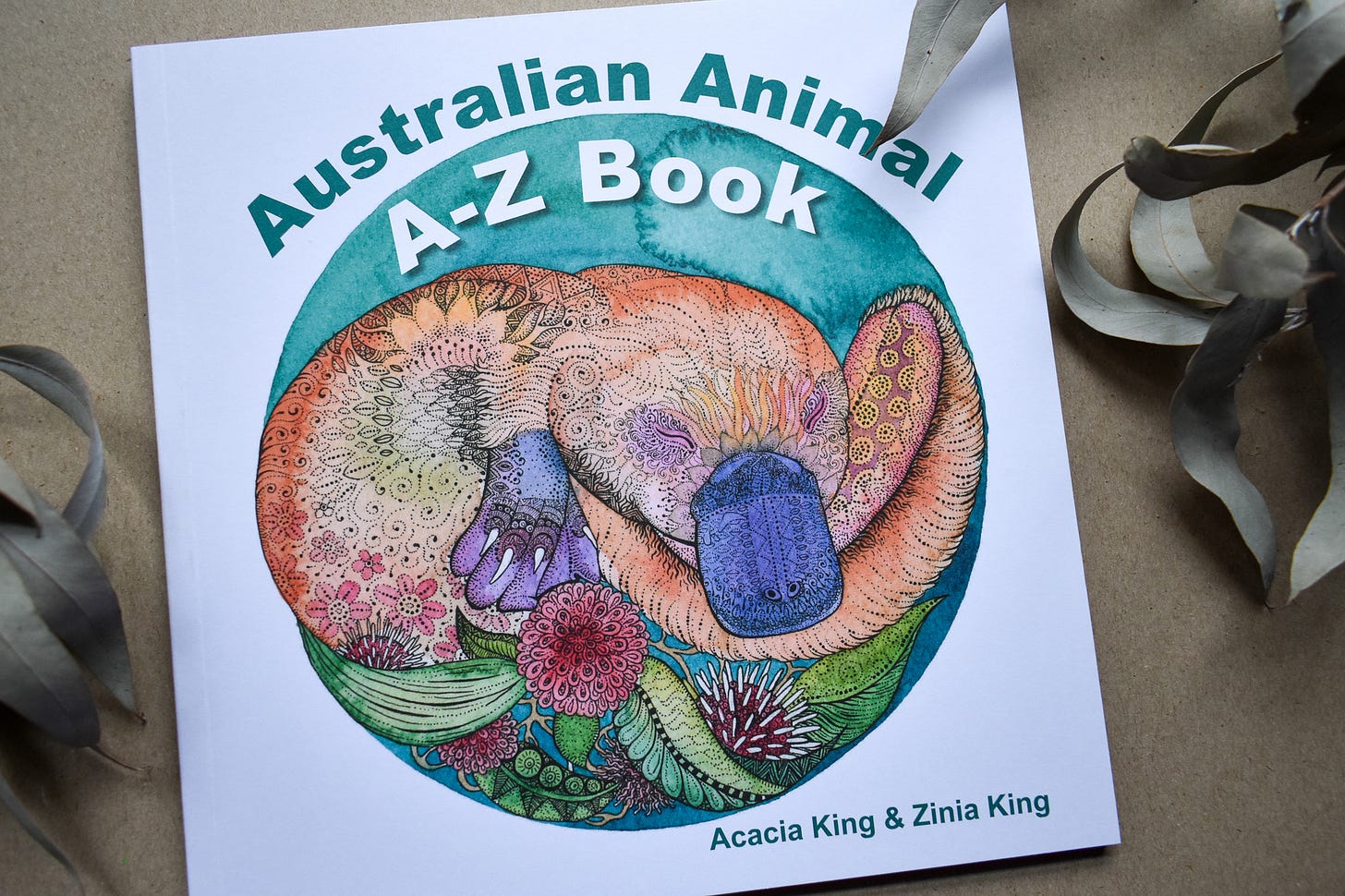Hello beautiful people and welcome to Lesson 6 of ‘Aussie Animals’ - Frilled-Neck Lizard! I’m often shocked by how little people know about Australia’s animals. Of course, everyone knows about Kangaroos and Koalas… but what about an Antechinus or Dunnart? See a video of me talking about the Frilled-Neck Lizard here.
Living in a country that’s caused the extinction of more animals than any other nation (see this ACF PDF), I feel a duty to spread awareness of these animals before they disappear forever (hopefully not).
In 2020, I illustrated an A-Z Book of Australian Animals packed with interesting facts and beautiful artwork to showcase the majesty of these creatures. My sister Acacia did lots of research (using her science background) and we both put together the writing. Check out the book here, they’re printed sustainably in Adelaide and I’m donating $5 from every book sold to the Bob Brown Foundation.
Today we’re looking at the Frilled-Neck Lizard (often called ‘Frillies’ or ‘Frilled Lizards’). Frillies actually happen to be members of the dragon family and appear much scarier than they actually are. When Frilled-Neck Lizards are frightened by a predator they open up the voluminous flap of skin around their neck to make them seem bigger and more threatening. If the predator is not frightened away, the Frillie will stand up onto its hind legs and run to the nearest tree to climb. This is a fantastic sight to see (watch a video of it here). A Frilled-Neck Lizard bite is not venomous, but would certainly hurt.
Frilled-Neck Lizards are actually mostly arboreal (meaning they live in trees) and can be found in the hot-tropics of northern and north-western Australia. They mostly eat insects, spiders and other invertebrates but will sometimes be found munching on small mammals and lizards. Like all dragons, they lay eggs and their young are born will fully functioning frills and an eagerness to explore the trees. Frill-Neck Lizards are known to live up to 20 years in captivity. In the wild they experience all the common threats to their survival including cats, foxes and land clearing.
If you want to contribute to the Frillies continued survial, consider donating to conservation charities like Bush Heritage Australia or the Bob Brown Foundation who help to conserve habitat. Don’t forget that I’m donating $5 from every one of my Australian Animal A-Z Books to the Bob Brown Foundation, so you could consider doing that too?! 😊
There is so much more to know about the Frilled-Neck Lizard, why not learn more about them and other awesome animals in my Australian Animal A-Z Book? You can also buy a giclee print of the Frilled-Neck Lizard artwork here.
Well, that it for now - my take on the Frilled-Neck Lizard. If you have had an experience with a Frilled-Neck Lizard, I’d love to hear about it in the comments. Also, if you liked this blog post and want more interesting arty Australian flora/fauna content like this why not subscribe?
With love and a dose of whimsy,
Zinia King







